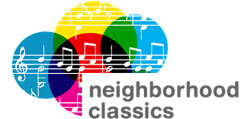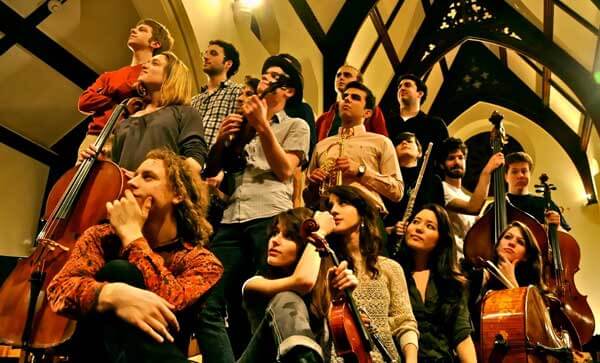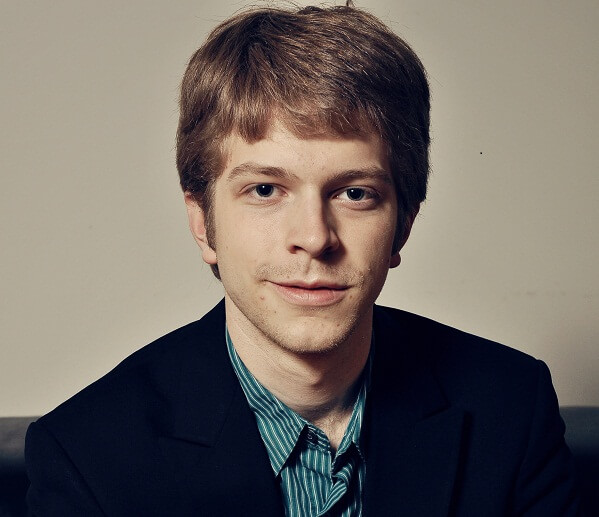 On Monday, February 12, 2013, the new music ensemble Contemporaneous presented Don’t Even, a concert at P.S. 142 on the Lower East Side of Manhattan as part of Neighborhood Classics, a concert series to benefit New York City public schools. In this, their second outing with Neighborhood Classics, Contemporaneous worked earlier that day with P.S. 142 students, talking to them about music, demonstrating their instruments, and showing them that anything can be used as a musical instrument—even parts of a car. All proceeds from the concert went to directly benefit P.S. 142’s music program.
On Monday, February 12, 2013, the new music ensemble Contemporaneous presented Don’t Even, a concert at P.S. 142 on the Lower East Side of Manhattan as part of Neighborhood Classics, a concert series to benefit New York City public schools. In this, their second outing with Neighborhood Classics, Contemporaneous worked earlier that day with P.S. 142 students, talking to them about music, demonstrating their instruments, and showing them that anything can be used as a musical instrument—even parts of a car. All proceeds from the concert went to directly benefit P.S. 142’s music program.

Contemporaneous, a new music ensemble based in New York City (photo credit: www.contemporaneous.org)
Contemporaneous is a New York-based ensemble of young musicians who are dedicated to playing the most exciting music of now. They have premiered 25 new works by young and emerging composers while presenting over 40 concerts during the past three years. Originally founded at Bard College, the ensemble now comprises a mix of Bard and non-Bard students and has quickly established itself as a powerhouse of an ensemble in New York City. For Don’t Even, they presented two more premieres to add to their repertoire, the first being Clunker Concerto by Sean Friar.
The performance of Clunker Concerto calls for a “junk car.” Below the main stage sat the disassembled vehicle, with everything from hubcaps to a car hood. Earlier that day, the children of P.S. 142 had pounded on the car parts, and now TIGUE Percussion, playing with Contemporaneous, did the same. Friar’s piece is powerfully engaging and incredibly fun, always balancing action between the percussion ensemble in the front and the chamber orchestra behind them. Friar does well to incorporate the odd aesthetic of the junk car into the rest of the ensemble, creating a solid piece of work full of rhythmic dynamism and an ever unfolding series of twists and turns.

Contemporaneous bassist Pat Swoboda (photo credit: Noah Stern Weber)
Contemporaneous followed with the East Coast premiere of Jeremy Podgursky’s MINDJOB. Podgursky juxtaposes complexity and simplicity to create a highly entertaining piece of music. There was a distinct jazz influence in MINDJOB, especially apparent in sections where a jazz rhythm section (piano, drums, and contrabass) break away from the rest of the ensemble. Those moments showcased the talent of musicians who often blend into the background of a large ensemble piece. The performance of Pat Swoboda, the lone bassist for Contemporaneous, was especially gratifying. How often do you hear a bass solo in a large ensemble piece? With an air of jazz and classical, MINDJOB is a wonderful exploration of the variation possible in the chamber orchestra medium.
Also on the program was a performance of Andrew Norman’s Try. The piece is all about trying, failing, and trying again. A guiro marked the moments where the ensemble started over, sometimes beginning again from existing material and other times from scratch. A rollercoaster of a piece, the ensemble quickly erupted from the starting gate, complexity and serendipity combining to surprise the listener in every which way. With each scrape of the guiro, the changes in the piece varied from similar to completely different. Often, the piece returned to a similar starting point and then veered off towards somewhere new. Try culminated in a prominent piano section, where the pianist continued to play the same chord, altering its delivery slightly with each repetition. Towards the end of the section, the pianist played the chord and then released the notes one by one, giving it an almost electronic feel.
Try is a fascinating look into the mind of a composer. We are watching him create his piece, try out new ideas, or scrap them completely. From the outset of the piece and with each new restart, the musical possibilities are endless and the composer hones in on one in particular in each iteration. The guiro marks the tearing of a page, the scrapping of an idea, and a return to the drawing board.
To end the concert, Contemporaneous performed David Lang’s increase. Lang’s work began with a low repetitious line in the flute that grew steadily until the entire ensemble was tangled in a thick rhythmic texture infused with rich melodic patterns. Contemporaneous offered a very together and tight performance, although perhaps their weakest of the four pieces presented that evening.

Contemporaneous conductor David Bloom
For such a young ensemble, Contemporaneous is fantastic. Led by conductor David Bloom, the ensemble never seems to miss a beat. They are simply a group of amazing young players led by an enthusiastic and inspiring young conductor. It is exciting to see how far they have come in the short time they have been around, and it’s even more exciting to wonder where they will go in the next couple of years. If things continue the way they’re headed, it’s easy to say Contemporaneous will become a major part of the new music scene in New York City.






















